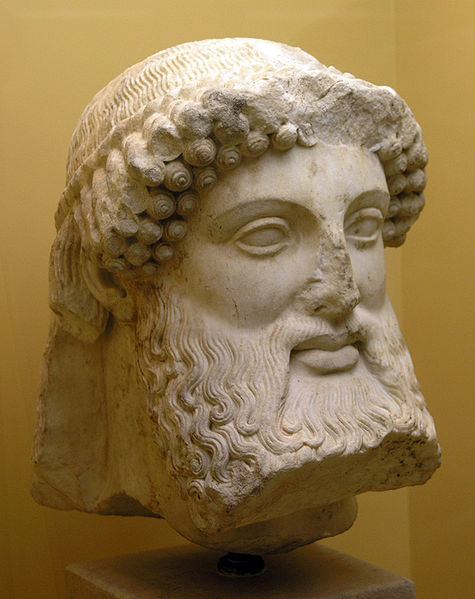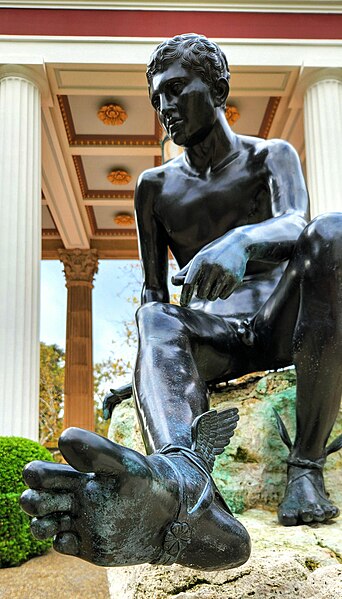The caduceus is the staff carried by Hermes in Greek mythology and consequently by Hermes Trismegistus in Greco-Egyptian mythology. The same staff was borne by other heralds like Iris, the messenger of Hera. The short staff is entwined by two serpents, sometimes surmounted by wings. In Roman iconography, it was depicted being carried in the left hand of Mercury, the messenger of the gods.
Hermes Ingenui carrying a winged caduceus upright in his left hand. A Roman copy after a Greek original of the 5th century BCE (Museo Pio-Clementino, Rome)
Fresco from Pompeii of the punishment of Ixion: in the center is Mercury holding the caduceus
Iris with the caduceus in detail from an Attic red-figure pelike, middle of fifth century BC (Agrigento, Sicily)
Coin from Sardis (Turkey) with caduceus (c. 140-144 CE)
Hermes is an Olympian deity in ancient Greek religion and mythology considered the herald of the gods. He is also considered the protector of human heralds, travelers, thieves, merchants, and orators. He is able to move quickly and freely between the worlds of the mortal and the divine aided by his winged sandals. Hermes plays the role of the psychopomp or "soul guide"—a conductor of souls into the afterlife.
Hermes Ingenui (Vatican Museums), Roman copy of the second century BC after a Greek original of the 5th century BC. Hermes has a kerykeion (caduceus), kithara, petasos (round hat) and a traveler's cloak.
Archaic bearded Hermes from a herm, early 5th century BC.
Hermes' winged sandals are evident in this Getty Villa copy of a Roman bronze recovered from the Villa of the Papyri, Naples
Statue of Hermes wearing the petasos and a voyager's cloak, and carrying the caduceus and a purse. Roman copy after a Greek original (Vatican Museums).







